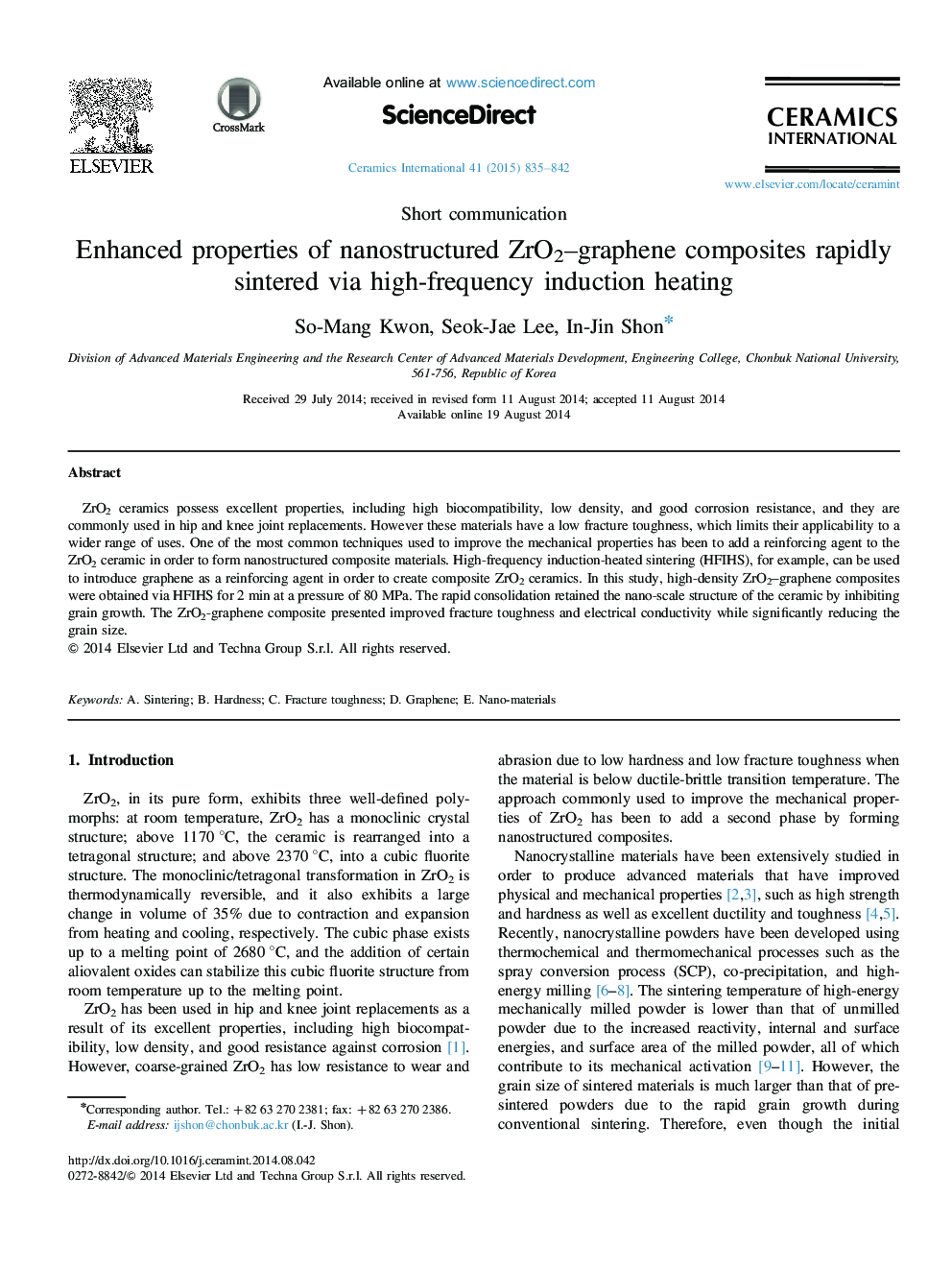| Article ID | Journal | Published Year | Pages | File Type |
|---|---|---|---|---|
| 1460773 | Ceramics International | 2015 | 8 Pages |
ZrO2 ceramics possess excellent properties, including high biocompatibility, low density, and good corrosion resistance, and they are commonly used in hip and knee joint replacements. However these materials have a low fracture toughness, which limits their applicability to a wider range of uses. One of the most common techniques used to improve the mechanical properties has been to add a reinforcing agent to the ZrO2 ceramic in order to form nanostructured composite materials. High-frequency induction-heated sintering (HFIHS), for example, can be used to introduce graphene as a reinforcing agent in order to create composite ZrO2 ceramics. In this study, high-density ZrO2–graphene composites were obtained via HFIHS for 2 min at a pressure of 80 MPa. The rapid consolidation retained the nano-scale structure of the ceramic by inhibiting grain growth. The ZrO2-graphene composite presented improved fracture toughness and electrical conductivity while significantly reducing the grain size.
